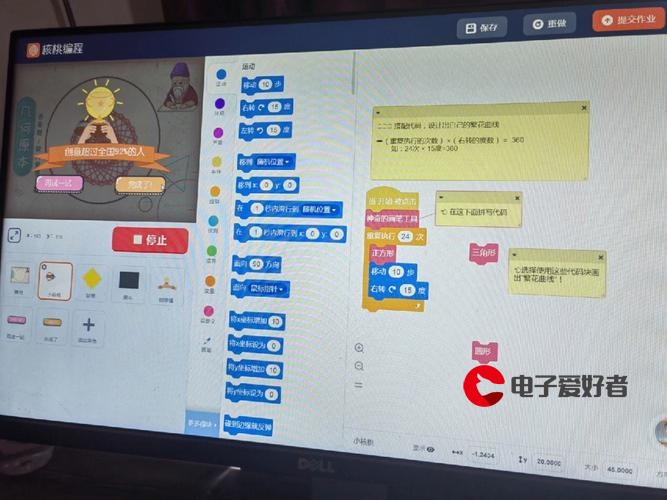 类型转换+IO流"/>
类型转换+IO流"/>
【C++】特殊类设计+类型转换+IO流
🌇个人主页:平凡的小苏
📚学习格言:命运给你一个低的起点,是想看你精彩的翻盘,而不是让你自甘堕落,脚下的路虽然难走,但我还能走,比起向阳而生,我更想尝试逆风翻盘。
🛸C++专栏:C++内功修炼基地
> 家人们更新不易,你们的👍点赞👍和⭐关注⭐真的对我真重要,各位路 过的友友麻烦多多点赞关注。 欢迎你们的私信提问,感谢你们的转发! 关注我,关注我,关注我,你们将会看到更多的优质内容!!
一、设计一个类,不能拷贝
1、c++98
class CopyBan
{
private:CopyBan(const CopyBan& cb);CopyBan& operator=(const CopyBan& cb);
};
int main()
{return 0;
}
1、将拷贝构造和赋值运算符重载设置为私有;
2、仅仅私有还不够,这并不能防止类内部就行拷贝。还要对拷贝构造和赋值运算符重载只声明却不实现。
2、C++11
class CopyBan
{CopyBan(const CopyBan& cb) = delete;CopyBan& operator=(const CopyBan& cb) = delete;
};
C++11直接使用delete禁用拷贝构造和赋值运算符重载。
二、请设计一个类只能在堆上创建对象
1、将构造设置为私有
-
将类的构造函数私有,拷贝构造声明成私有。防止别人调用拷贝在栈上生成对象。
-
提供一个静态的成员函数,在该静态成员函数中完成堆对象的创建
-
外部通过CreateObj函数构造一个对象后,外部可以利用这个对象的指针拷贝构造一个栈区的对象,需要禁用拷贝构造。
class HeapOnly
{
public:static HeapOnly* CreateObject(){return new HeapOnly;}
private:HeapOnly() {}// C++98// 1.只声明,不实现。因为实现可能会很麻烦,而你本身不需要// 2.声明成私有HeapOnly(const HeapOnly&);// or// C++11 HeapOnly(const HeapOnly&) = delete;
};
2、将析构设置为私有
将析构函数设置为私有,栈区对象由于无法析构所以无法创建。堆区对象需要手动调用自己写的清理函数释放。
三、设计一个类只能在栈区设置对象
1、将构造函数私有;
2、提供一个静态的CreateObj方法用于构造栈区对象;
3、但是无法防止外部构造静态对象。
4、如果想彻底禁止生成静态的对象,需要再禁用拷贝构造。不过这样这个类只能生成临时对象或者引用的对象了,不能修改。
四、请设计一个类,不能被继承
1、C++98方式
// C++98中构造函数私有化,派生类中调不到基类的构造函数。则无法继承
class NonInherit
{public:static NonInherit GetInstance(){return NonInherit();}private:NonInherit(){}
};
2、C++11方式
final关键字,final修饰类,表示该类不能被继承。
class A final
{// ....
};
五、请设计一个类,只能创建一个对象(单例模式)
一个类只能创建一个对象,即单例模式,该模式可以保证系统中该类只有一个实例,并提供一个访问它的全局访问点,该实例被所有程序模块共享。
1、饿汉模式设计单例对象
class SingLeton
{
public:static SingLeton* getInstance(){return &m_instance;}
private://将构造函数私有SingLeton();//C++98方式防拷贝赋值SingLeton(const SingLeton& sl);SingLeton operator=(const SingLeton& sl);//C++11方式防拷贝赋值SingLeton(const SingLeton& sl) = delete;SingLeton operator=(const SingLeton& sl) = delete;static SingLeton m_instance;// 在程序入口之前就完成单例对象的初始化
};SingLeton SingLeton::m_instance;
饿汉模式:在main函数被加载之前就创建好对象。(全局和静态将在main函数之前被加载)
1、私有构造函数,禁用拷贝构造和赋值运算符重载;
2、在类中声明、外部定义一个静态的对象,用于调用类中私有的构造函数,同时作为单例对象被使用;
3、在类中提供一个获取静态对象的函数GetInstance,为了外部可调用,所以将该函数设置为静态。
饿汉模式的特点:
1、单例对象初始化时,数据太多会导致启动慢;
2、如果多个单例类有初始化的依赖关系,饿汉模式无法控制。例如A和B都是单例类,因为B的启动依赖A,所以需要先初始化A,再初始化B,但是饿汉模式无法控制对象的初始化顺序。
3、饿汉模式创建的对象绝对不会有线程安全问题,因为该模式的对象在main函数之前已经被创建好了,main函数之前线程都没启动呢
2、懒汉模式设计单例对象
如果单例对象构造十分耗时或者占用很多资源,比如加载插件啊, 初始化网络连接啊,读取文件啊等等,而有可能该对象程序运行时不会用到,那么也要在程序一开始就进行初始化,就会导致程序启动时非常的缓慢。 所以这种情况使用懒汉模式(延迟加载)更好。
2.1、懒汉模式的设计以及线程安全问题
#include <iostream>
#include <thread>
#include <mutex>
#include <vector>
#include <string>
#include <ctime>using namespace std;
class SingLeton
{
public:static SingLeton* getInstance(){//双检查加锁if (m_instance == nullptr){_mtx.lock();if (m_instance == nullptr){m_instance = new SingLeton();}_mtx.unlock();}return m_instance;}// 一般全局都要使用单例对象,所以单例对象一般不需要显示释放// 有些特殊场景,想显示释放一下static void DelInstance(){_mtx.lock();if (m_instance){delete m_instance;m_instance = nullptr;}_mtx.unlock();}void Add(const string& str){_mtx.lock();_v.push_back(str);_mtx.unlock();}void Print(){_mtx.lock();for (auto& e : _v){cout << e << endl;}cout << endl;_mtx.unlock();}// 单例对象回收class GC{public:~GC(){DelInstance();}};static GC _gc;
private://将构造函数私有SingLeton(){}//C++11方式防拷贝赋值SingLeton(const SingLeton& sl);SingLeton operator=(const SingLeton& sl);
private:static SingLeton* m_instance;// 在程序入口之前就完成单例对象的初始化static mutex _mtx;//静态锁,全局都能看到vector<string>_v;
};
//静态变量初始化
SingLeton* SingLeton::m_instance = nullptr;
mutex SingLeton::_mtx;
SingLeton::GC SingLeton::_gc;int main()
{srand(time(0));size_t n = 30;thread t1([n]() {for (size_t i = 0; i < n; ++i){SingLeton::getInstance()->Add("t1线程:" + to_string(rand()));}});thread t2([n]() {for (size_t i = 0; i < n; ++i){SingLeton::getInstance()->Add("t2线程:" + to_string(rand()));}});t1.join();t2.join();SingLeton::getInstance()->Print();return 0;
}
懒汉模式的特点:
1、对象在main函数之后才会创建;
2、可以主动控制对象的创建时机。
3、创建对象时存在线程安全问题,如果多个线程同时获取单例对象,会可能new多个对象,最后一个创建的对象指针会覆盖之前创建的对象指针,导致内存泄露。
2.2、懒汉模式需要加锁解决的线程安全问题
3、单例对象的释放问题
1、一般单例对象不需要考虑释放,资源会在进程结束时自动释放;
2、释放的写法如下:可以手动清理,将一些资源保存:可手动调用DelInstance进行资源的回收,main函数结束时,操作系统也会自动回收单例对象的资源。
4、比较简洁的懒汉模式
class SingLeton
{
public:static SingLeton* getInstance(){m_instance = new SingLeton();return m_instance;}
private://将构造函数私有SingLeton(){}//C++11方式防拷贝赋值SingLeton(const SingLeton& sl);SingLeton operator=(const SingLeton& sl);
private:static SingLeton* m_instance;// 在程序入口之前就完成单例对象的初始化vector<string>_v;
};
//静态变量初始化
SingLeton* SingLeton::m_instance = nullptr;
1、私有构造函数,禁用拷贝构造和赋值运算符重载;
2、通过getInstance返回静态对象(静态局部变量是在main函数之后才创建初始化)
这种方式构建的单例懒汉模式在C++11发布之前会有线程安全问题,多线程环境下可能会造成静态对象被初始化多次;而C++11规定静态局部变量是线程安全的,可以放心使用。
六、类型转换
1、C语言中的类型转换
C语言中总共有两种形式的类型转换:隐式类型转换和显式类型转换。
-
隐式类型转化:编译器在编译阶段自动进行,能转就转,不能转就编译失败
-
显式类型转化:需要用户自己处理
void Test ()
{int i = 1;// 隐式类型转换double d = i;printf("%d, %.2f\n" , i, d);int* p = &i;// 显示的强制类型转换int address = (int) p;printf("%x, %d\n" , p, address);
}
缺陷:
转换的可视性比较差,所有的转换形式都是以一种相同形式书写,难以跟踪错误的转换
2、C++中的类型转换
C++尤其认为隐式类型转化有些情况下可能会出问题:比如数据精度丢失。
2.1、static_cast
int main()
{double d = 12.34;int a = static_cast<int>(d);cout << a << endl;return 0;
}
static_cast适用于相似类型的转换。(可以隐式类型转换的都能用static_cast)
2.2、reinterpret_cast
int main()
{double d = 12.34;int a = static_cast<int>(d);cout << a << endl;// 这里使用static_cast会报错,应该使用reinterpret_cast//int *p = static_cast<int*>(a);int* p = reinterpret_cast<int*>(a);return 0;
}
reinterpret_cast适用于不相关类型之间的转换。(不能隐式类型转换,只能强制类型转换的用reinterpret_cast)
2.3、const_cast
int main()
{const int a = 2;int* p = const_cast<int*>(&a);*p = 3;cout << a << endl;cout << *p << endl;return 0;
}
const_cast用于删除变量的const属性。需要关注内存可见性问题
编译器对const变量会有优化,认为const变量不会被改变,编译器在优化代码时可能会将变量放到寄存器或者其他高速缓存中。可以在a初始化时加上volatile关键字,加了volatile关键字后,对变量的读取和写入操作会从内存中进行,而不是从缓存中进行。
2.4、dynamic_cast
dynamic_cast用于将一个父类对象的指针 / 引用转换为子类对象的指针或引用(动态转换)
向上转型:子类对象指针 / 引用->父类指针 / 引用(不需要转换,赋值兼容规则)
向下转型:父类对象指针 / 引用->子类指针 / 引用(用dynamic_cast转型是安全的)
注意:
1.dynamic_cast只能用于父类含有虚函数的类
2. dynamic_cast会先检查是否能转换成功,能成功则转换,不能则返回0
3、RTTI
RTTI:Run-time Type identifification的简称,即:运行时类型识别。
C++通过以下方式来支持RTTI:
1. typeid运算符
2. dynamic_cast运算符
3. decltype
七、IO流
1、C语言的输入输出
对输入输出缓冲区的理解:
1.可以屏蔽掉低级I/O的实现,低级I/O的实现依赖操作系统本身内核的实现,所以如果能够屏蔽这部分的差异,可以很容易写出可移植的程序。
2.可以使用这部分的内容实现“行”读取的行为,对于计算机而言是没有“行”这个概念,有了这部分,就可以定义“行”的概念,然后解析缓冲区的内容,返回一个“行”。
2、C++IO流
C++系统实现了一个庞大的类库,其中ios为基类,其他类都是直接或间接派生自ios类
IO流的特点
1.面向对象
2.更好支持自定义类对象的IO
3、流提取
流提取是一个阻塞操作,以空格或者换行作为一段读取的结束:
cin>>str是std::string的operator>>所支持的,它的返回值是istream。
为什么返回值istream可以作为while循环的逻辑判断呢?这是因为ios这个父类重载了operator bool,让其支持了逻辑判断。
从C++11开始,可以使用explicit关键字来显式声明operator bool()函数,完成istream到bool类型的转变,以避免隐式类型转换带来的问题。(这意味着其内部显式地将istream对象转换为bool类型的值,而不能进行隐式类型转换。可以避免编译器自作主张进行隐式类型转换,例如编译器将一个对象错误地转换为bool类型的值,而导致程序出现错误。)
那么问题来了,为什么void*和bool可以被重载?其实不是他俩能被重载,而是自定义类型可以通过类内重载指定类型完成隐式类型转换。(本质上是隐式类型转换,悄悄的改变类型,上面说了,你重载了类型之后,永远猜不到它会在哪个不该转换的地方发生转换)
4、C++文件IO流
C++根据文件内容的数据格式分为二进制文件和文本文件。采用文件流对象操作文件的一般步骤:
1. 定义一个文件流对象
ifstream(只输入用)
ofstream(只输出用)
fstream(又输出用)
2. 使用文件流对象的成员函数打开一个磁盘文件,使得文件流对象和磁盘文件之间建立联系
3. 使用提取和插入运算符对文件进行读写操作,或使用成员函数进行读写
4. 关闭文件
4.1、二进制读写
struct ServerInfo
{char _address[32];//不要使用stringint _port;
};struct ConfigManager
{ConfigManager(const char* filename):_filename(filename){}void WriteBin(const ServerInfo& info){ofstream ofs(_filename, ofstream::out | ofstream::binary);ofs.write((char*)&info, sizeof(info));}void ReadBin(ServerInfo& info){ifstream ifs(_filename, ifstream::in | ifstream::binary);ifs.read((char*)&info, sizeof(info));}private:string _filename;
};
int main()
{ServerInfo winfo = { "192.0.0.1xxxxxxxxxxxxxxxxxxxxx", 80 };string str;cin >> str;if (str == "二进制写"){ConfigManager cm("test.txt");cm.WriteBin(winfo);}else if (str == "二进制读"){ServerInfo rinfo;ConfigManager cm("test.txt");cm.ReadBin(rinfo);cout << rinfo._address << endl;cout << rinfo._port << endl;}return 0;
}
二进制读写,不要对string对象进行读写操作。
4.2、文本读写(简单写法)
#include <iostream>
#include <fstream>
#include <string>
using namespace std;class Date
{friend ostream& operator << (ostream& out, const Date& d);friend istream& operator >> (istream& in, Date& d);
public:Date(int year = 1, int month = 1, int day = 1):_year(year), _month(month), _day(day){}operator bool(){// 这里是随意写的,假设输入_year为0,则结束if (_year == 0)return false;elsereturn true;}
private:int _year;int _month;int _day;
};istream& operator >> (istream& in, Date& d)
{in >> d._year >> d._month >> d._day;return in;
}
ostream& operator << (ostream& out, const Date& d)
{out << d._year << " " << d._month << " " << d._day;return out;
}
struct ServerInfo
{char _address[32];//不要使用stringint _port;Date _date;
};
struct ConfigManager
{ConfigManager(const char* filename):_filename(filename){}// 文本读写 C++文本读写更简单// 文本读写本质,内存中任何类型都是转成字符串在写// c语言文本读写很不方便,因为要不断转字符串// c++封装了以后就有很大的优势void WriteText(const ServerInfo& info){ofstream ofs(_filename, ofstream::out);ofs << info._address << " ";ofs << info._port << " ";ofs << info._date << endl;}void ReadText(ServerInfo& info){ifstream ifs(_filename, ifstream::in);ifs >> info._address;ifs >> info._port;ifs >> info._date;}
private:string _filename;
};
int main()
{ServerInfo winfo = { "192.0.0.1xxxxxxxxxxxxxxxxxxxxx", 80,{2023,11,5} };string str;cin >> str;if (str == "文本写"){ConfigManager cm("test.txt");cm.WriteText(winfo);}else if (str == "文本读"){ServerInfo rinfo;ConfigManager cm("test.txt");cm.ReadText(rinfo);cout << rinfo._address << endl;cout << rinfo._port << endl;cout << rinfo._date << endl;}return 0;
}
1、使用ofstream进行写入的时候,每一个变量写完必须给空格或换行,标定每个变量的读取结束,否则读取时会读取出错。
2、自定义类型也可以使用流插入和流提取的写法是因为ofstream和ifstream是ostream的子类,
子类对象可以调用继承于父类的流插入和流提取。(前提是自定义类型重载了流插入和流提取)
5、使用stringstream序列化和反序列化
#include <iostream>
#include <fstream>
#include <string>
#include <sstream>
using namespace std;class Date
{friend ostream& operator << (ostream& out, const Date& d);friend istream& operator >> (istream& in, Date& d);
public:Date(int year = 1, int month = 1, int day = 1):_year(year), _month(month), _day(day){}operator bool(){// 这里是随意写的,假设输入_year为0,则结束if (_year == 0)return false;elsereturn true;}
private:int _year;int _month;int _day;
};istream& operator >> (istream& in, Date& d)
{in >> d._year >> d._month >> d._day;return in;
}
ostream& operator << (ostream& out, const Date& d)
{out << d._year << " " << d._month << " " << d._day;return out;
}
// 序列化和反序列化
struct ChatInfo
{string _name; // 名字int _id; // idDate _date; // 时间string _msg; // 聊天信息
};int main()
{ChatInfo winfo = { "张三", 135246, { 2022, 4, 10 }, "晚上一起看电影吧" };stringstream oss;oss << winfo._name << " ";oss << winfo._id << " ";oss << winfo._date << " ";oss << winfo._msg;string str = oss.str();cout << str << endl;stringstream iss(str);ChatInfo rinfo;iss >> rinfo._name;iss >> rinfo._id;iss >> rinfo._date;iss >> rinfo._msg;cout << "-------------------------------------------------------" << endl;cout << "姓名:" << rinfo._name << "(" << rinfo._id << ") ";cout << rinfo._date << endl;cout << rinfo._name << ":>" << rinfo._msg << endl;cout << "-------------------------------------------------------" << endl;return 0;
}
stringstream兼具ostringstream和istringstream
更多推荐
【C++】特殊类设计+类型转换+IO流












发布评论